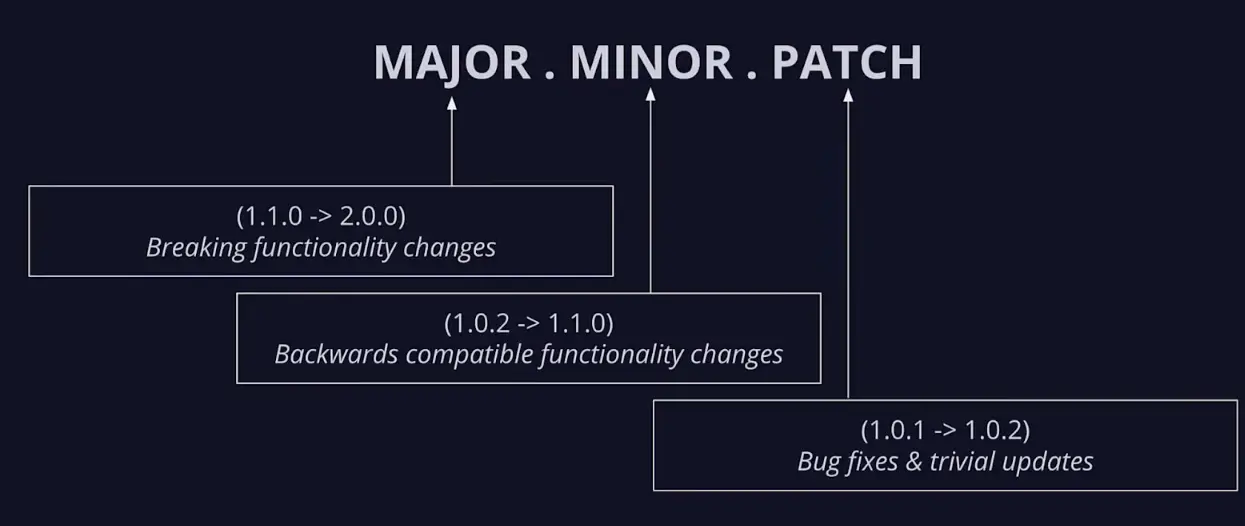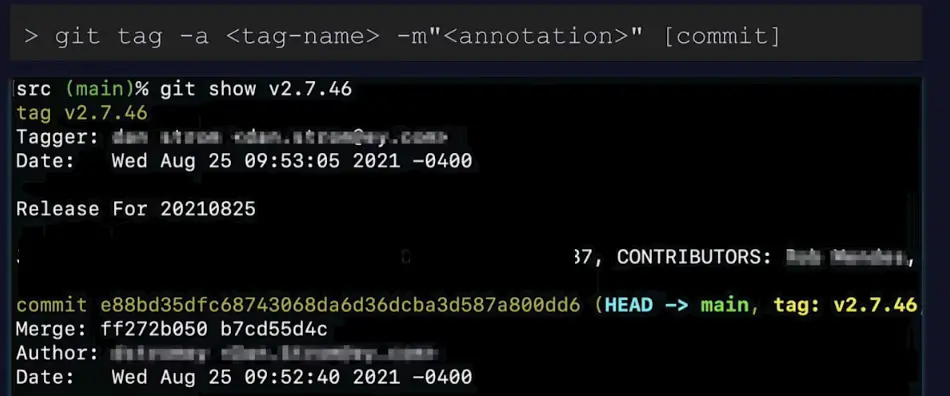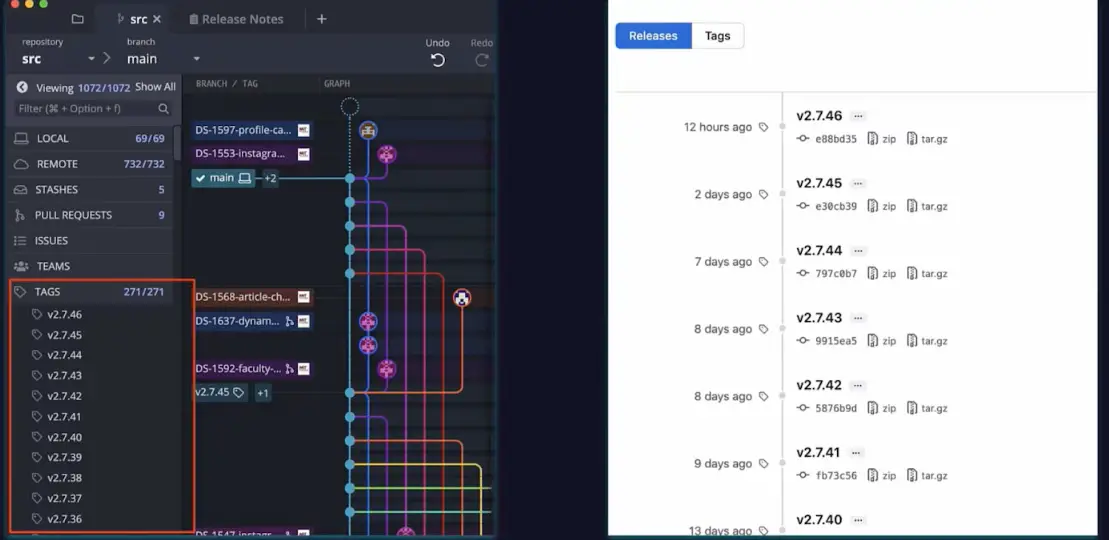Managing version numbers in Git
This article provides an overview of how to manage version numbers in Git. We will use semantic versioning because it is the most widely used version control scheme.
Managing version numbers in Git
Before we get into management, let’s define some terms.
Semantic Versioning
Semantic versioning is just a numbering scheme. We use it as an industry standard software development metric to show how much a release has changed since the last release.
It is a clear and concise way to indicate the level of change and is widely used by developers.

The semantic version number consists of three parts:
- Main Parts
- Secondary part
- Patch number
We won't go into depth defining each part and its function, but here's a quick diagram.

Semantic versioning requires us to double-check your version numbers before releasing your code. This makes the pattern a good fit for grouping Git tags.
Git tags
We use Git tags to mark a meaningful commit. Git has two kinds of tags.
- Lightweight Tags
- Annotated Tags
A lightweight tag is a simple named pointer. Here is an example.

Annotated tags, on the other hand, contain more detailed information about a commit. We can mark it as an annotated tag using the commit command with the -a flag and provide a description using the -m flag.git tag
Here is an example.

Annotated Git Tags + Semantic Versioning
Using annotated Git tags and semantic versioning allows us to label commits in our repository with version numbers. Some Git products with interfaces support semantic versioning of Git tags.
Here is an example on a Mac.

As shown below, we can run the git tag command to tag a commit using the semantic versioning scheme.
$ git tag - "v1.2.0-beta" -m "version v1.2.0-beta"
The command above adds the v1.2.0-beta tag to our repository. To view the details of the tag, we can run:
$ git show v1.2.0-beta
In short, semantic versioning combined with annotated Git tags provides a perfect way to indicate the level of changes to a codebase. We have already covered how to use semantic versioning of your repository with Git tags.
For reprinting, please send an email to 1244347461@qq.com for approval. After obtaining the author's consent, kindly include the source as a link.
Related Articles
Git installation and establishment of local warehouse service
Publish Date:2025/04/05 Views:89 Category:Git
-
Git is a distributed version control system: the client does not only extract the latest version of the file snapshot, but also completely mirrors the original code repository. It has the following advantages: a. Since every extraction oper
git remote operation——multiple remote repositories for one project
Publish Date:2025/04/05 Views:131 Category:Git
-
Multiple remote repositories for a git project In our git project, the command to operate the remote repository information is $ git remote # 查看当前所有的远程仓库的名称 $ git remote -v # 查看远程仓库的名称和远程仓
Git cherry pick command usage
Publish Date:2025/04/05 Views:190 Category:Git
-
git cherry-pick is a powerful command that allows us to select an arbitrary Git commit by reference and attach it to the HEAD of the current working branch. Cherry picking is the act of picking a commit from one branch and applying it to an
Comparison between Git merge and Git rebase
Publish Date:2025/04/05 Views:171 Category:Git
-
The git rebase command may seem like Git wizardry to beginners, but if used carefully, it can actually make life easier for your development team. In this article, we compare git rebase with the related git merge command and identify all th
How to fix Git error Error: src refspec master does not match any
Publish Date:2025/04/05 Views:124 Category:Git
-
When using Git, we may encounter the error "src refspace master does not match any". Here's what the error means and how to fix it. What does src refspec master does not match any Mean in Git mean? We may encounter this error when we try to
Rebase local branch when pulling changes from remote repository branch in Git
Publish Date:2025/04/05 Views:144 Category:Git
-
This article will cover the basics of rebasing your local branch when pulling changes from a remote repository branch in Git. We use the version control system Git to track changes made to files. We commit changes in a local branch in our l
Undo Git Stash
Publish Date:2025/04/04 Views:187 Category:Git
-
This article explains how to make and save changes to a repository. Git allows you to save changes locally and push them to a server when needed. In Git, we don't use the term save , but commit . We use git add , git commit , and git stash
View a list of cache entries in Git
Publish Date:2025/04/04 Views:59 Category:Git
-
We often need to pause our work and focus on something else in our development environment. Therefore, we may need to temporarily save our current work and focus on a different one. We may want to resume our original work later. git stash T
Git stores specific files
Publish Date:2025/04/04 Views:115 Category:Git
-
This article will cover storing changes to only specific files in Git. In Git, when we make some changes in our working tree, we may have some changes which may or may not be staged in our local repo. We may now wish to save these changes f

